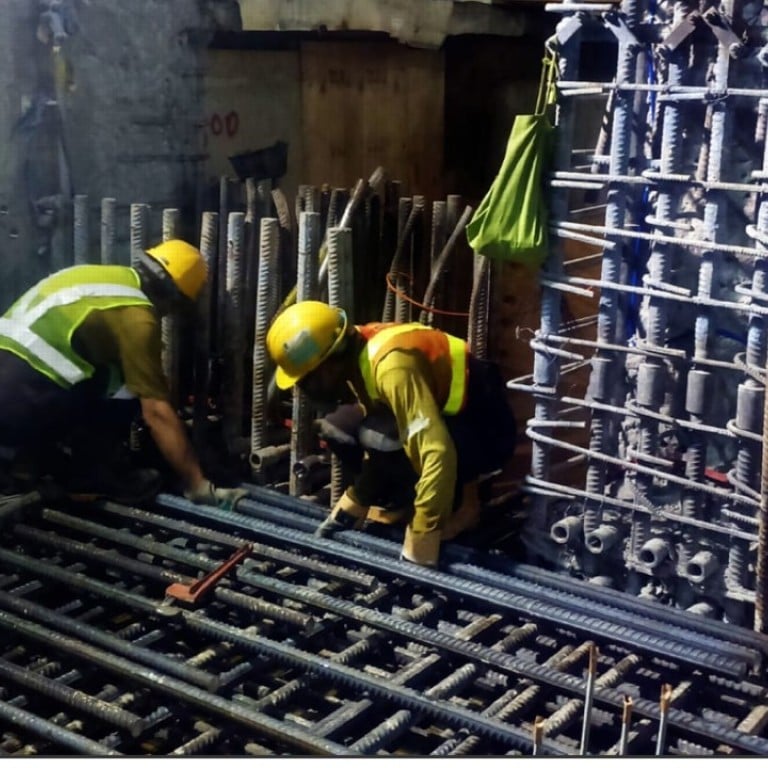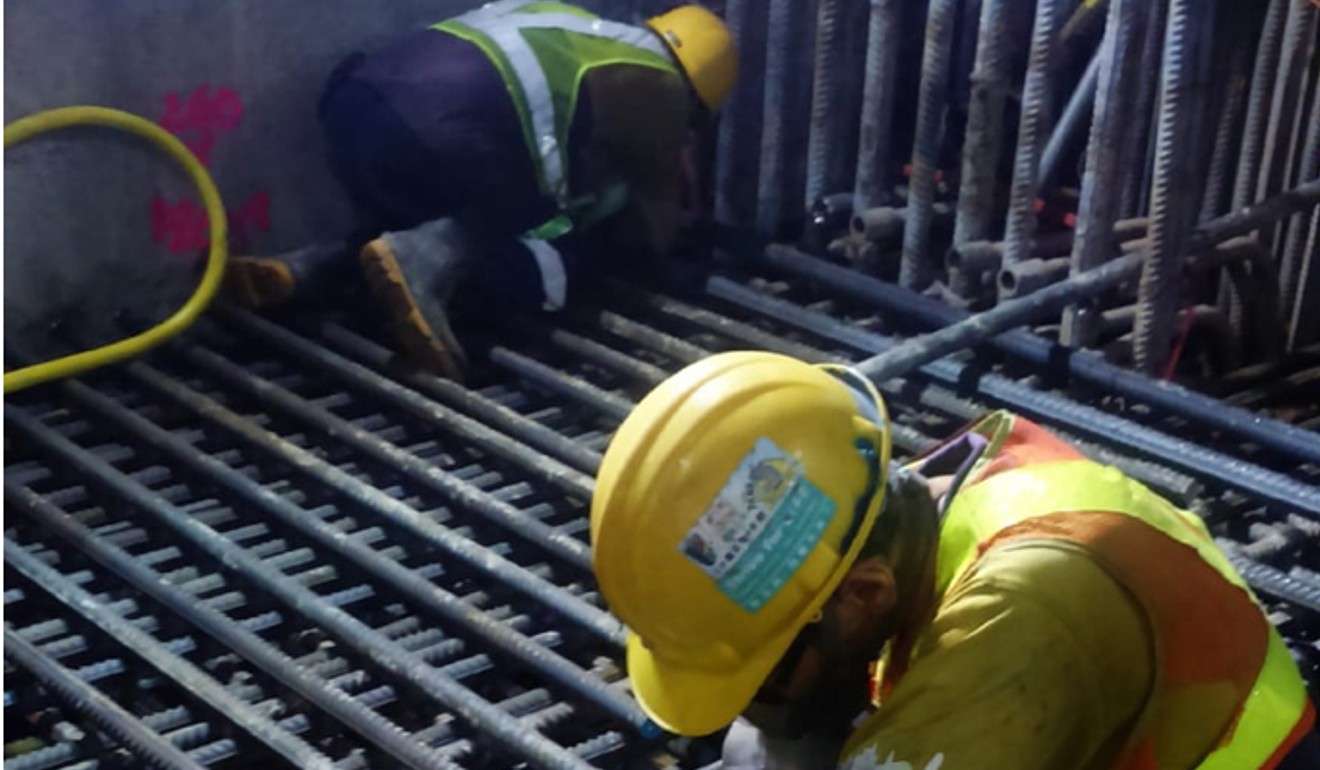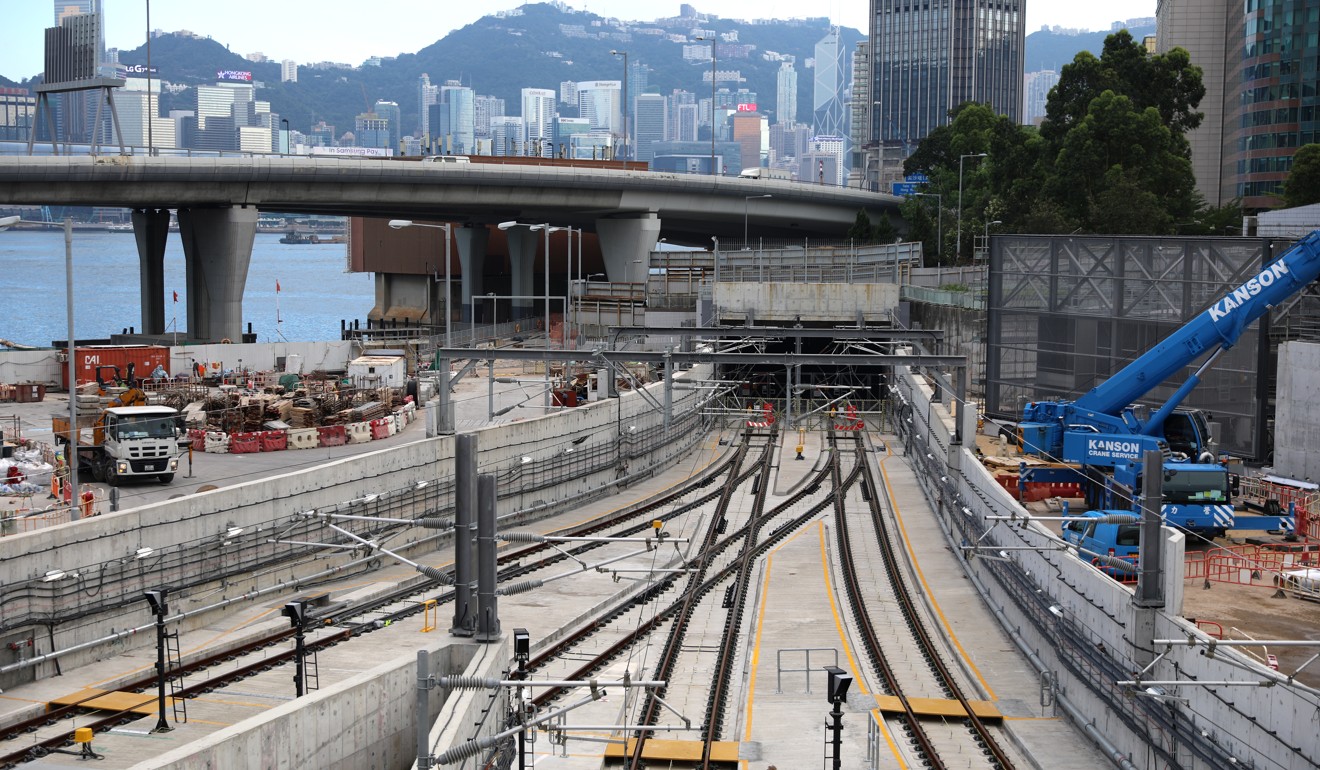
Leaked photos show workers cutting steel bars at scandal-hit HK$97.1 billion Sha Tin-Central rail link in Hong Kong
Rail giant MTR Corp had singled out subcontractor as being behind shoddy work on Hung Hom station platforms – but pictures suggest otherwise
Workers in the uniforms of Leighton Contractors (Asia), the main contractor on a section of the city’s scandal-hit HK$97.1 billion (US$12.4 billion) Sha Tin-Central rail link, were seen and photographed cutting corners, according to sources.
The photos, obtained by the Post and date stamped September 22, 2015, show two workers in Leighton clothing and safety helmets cutting steel bars that formed the framework for platforms at Hung Hom station on Hong Kong’s most expensive rail project. Two sources said they were Leighton workers.

Sources said a middle-ranking superintendent at Leighton in charge of the project had secretly hired some workers to carry out the faulty work as Fang Sheung staff refused to do it. The superintendent was later sacked for another reason.
New scandal for MTR Corp over HK$5 billion station wall ‘risk’
“Now Fang Sheung is being made a scapegoat. In fact, both Leighton senior management and the MTR site inspectors have been in the dark about this under-the-table job by middle management,” one insider said.
“That explains why the MTR Corp has still failed to get hold of the full picture.”

Leighton was the main contractor responsible for building the platforms secured by 26,000 couplers which connect layers of steel bars. Under a HK$5.2 billion contract signed in March 2013, the firm is responsible for building the Hung Hom station floors and stabling sidings for the rail link.
Despite repeated attempts by the Post to obtain a response, Leighton has remained silent over the saga.
Give HK$97 billion rail scandal investigators ‘power of subpoena’
The insider said the whole incident originated from two faulty diaphragm walls built by French-based subcontractor Intrafor which supported the platforms.
“The diaphragm walls were installed with couplers for connecting the steel bars. But they were found to be badly done in inaccurate locations and with many filled with concrete, which made the fitting of steel bars impossible,” the source said.
As Fang Sheung refused to do the work and was willing to return some of its contract payment, the Leighton superintendent directly hired workers with the refunded money to do the job. An Intrafor spokeswoman said it had no comment on the issue.
The MTR Corp said last week its staff did not see who cut the steel bars but it was believed Fang Sheung workers were responsible as they were the only ones working around the site. Fang Sheung could not be reached for comment.
Bad news and scandal are piling pressure on Hong Kong’s MTR
MTR projects director Philco Wong Nai-keung earlier said all on-site workers, no matter from which subcontractor, wore the same uniforms as the main contractor. But according to another source, only Leighton workers could wear its uniforms on the site. Asked by the Post if it was sure that subcontractors could wear Leighton uniforms, the MTR would say only that it was still asking for all relevant information from Leighton.

Lawmaker and rail expert Michael Tien Puk-sun called on the government to dismantle five concrete panels on the platform to conduct sample checks on the steel bars despite the MTR’s claim that the problem had already been rectified.
“I suspect the platform is still riddled with faulty steel bars. The best way is to remove a portion of the concrete at the platform for sample inspection. If some steel bars are still found to be faulty, I demand the government remove the remaining 27 panels and conduct checks on the remaining steel bars,” he said.
He pointed out that under the law, the MTR Corp needed to conduct checks on 20 per cent of the couplers, or 5,200 in total.
“If the MTR really did inspect all 5,200 couplers, its staff needed to sign papers to certify it. It needs to deliver proof that it fulfilled its job in its report,” he said.
The rail operator is due to submit a report to the government on Friday about the saga.


